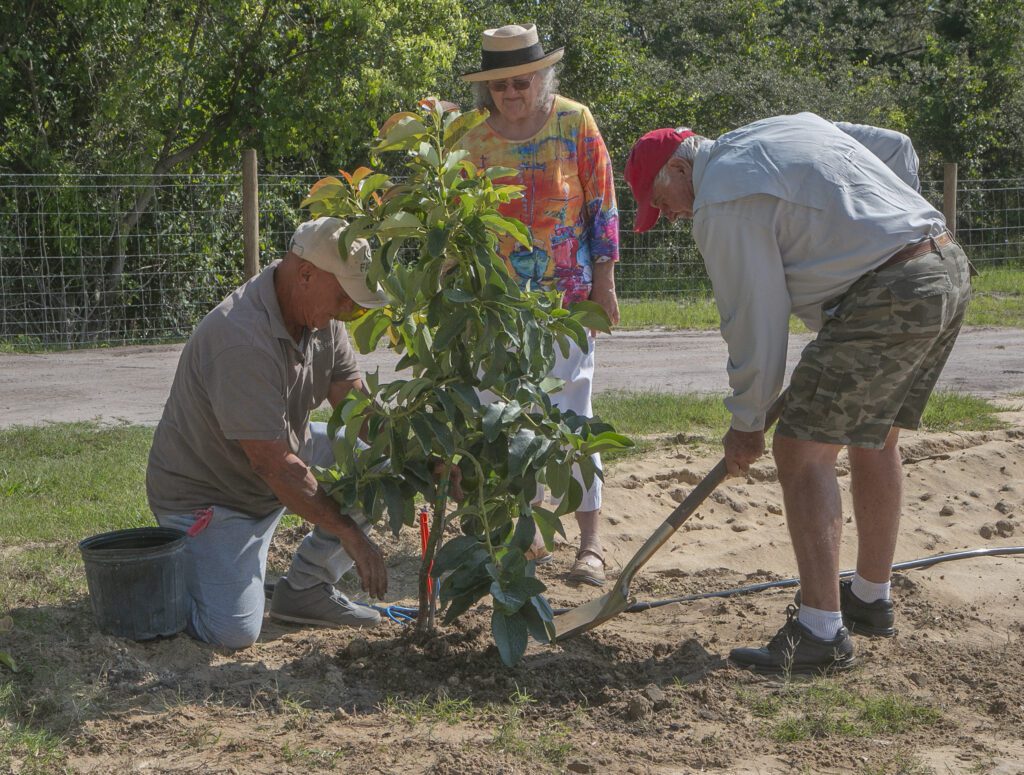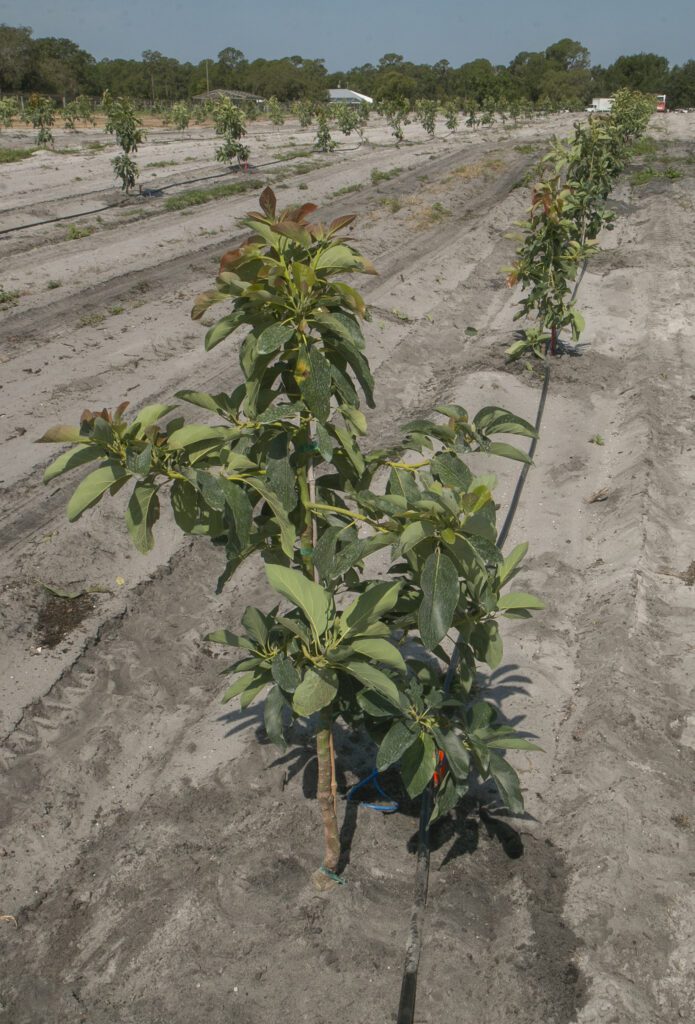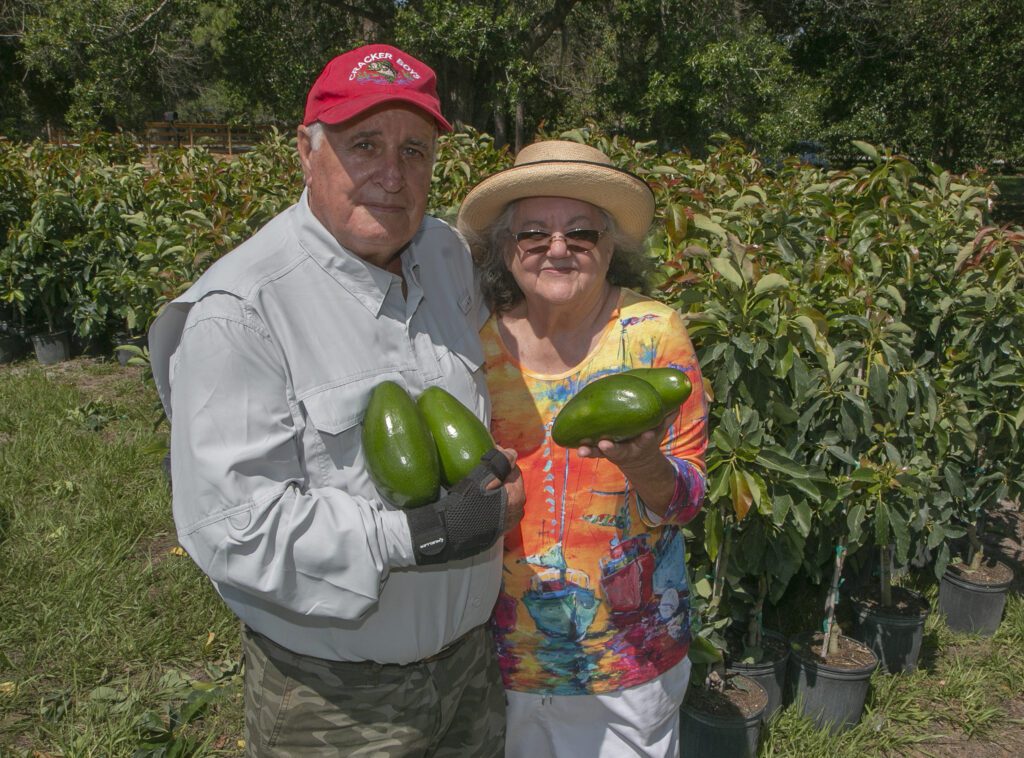Frostproof Grower Trades Citrus for Avocados
by TERESA SCHIFFER
photos by MICHAEL WILSON
Mitch McLellan is determined to blaze a trail out of the quagmire of doom that has beset Central Florida growers thanks to the unending ravages of citrus greening. He holds as his beacon of hope another crop – avocado.
Avocados require warm weather to flourish. Currently, avocados are commercially grown mainly in Florida’s Miami-Dade and Collier counties.
McLellan has a long history in agriculture, though he’s relatively new to growing crops. He was a cattle rancher in Plant City for years until he says Hillsborough County stopped incentivizing agricultural endeavors like his. That prompted McLellan to move to Frostproof and try his hand at growing citrus.
Four years of growing citrus was enough to show McLellan how challenging that is for Central Florida grove owners these days.
“The first year, I lost 10 percent, and replanted. The second year, I lost 20 percent – all due to greening. I replanted. The third year, I lost 30 percent. It just kept increasing by 10 percent every year. Then the hurricane came along, and the hurricane eliminated 70 percent,” McLellan says of his frustrated efforts to enter the citrus industry. “The last year I picked fruit off the citrus trees, I had a whopping $100 return.”
That’s when he visited the specialists at the University of Florida to get some advice. He talked to Luis Rodriguez Rosado, the UF/IFAS Small Farms and Pesticide Education Extension Agent for Polk County. Rodriguez Rosado listed a number of suggestions for possible crops that McLellan might have more success with, but the one that stuck with McLellan was avocados.
McLellan then went down to Homestead and Miami to do some firsthand research talking with avocado growers in South Florida. He learned that out of about 30 varieties of avocados, there are nine grown commercially, and only three that are suitable for Central Florida.
“Avocados have been in Florida since 1833. They are in the evergreen family, and are a berry,” McLellan explains. “The avocados that grow in this area are Choquette, Oro Negro, which is the black avocado you see in the grocery store, and the Monroe. I chose the Choquette because it is a late fruit but it produces more pounds per tree than any of the rest of them.”
On June 6, McLellan hosted a field day on his Frostproof farm as 700 avocado trees were planted on 6.5 acres that border Lake Clinch. Warm air from the lake seems to prevent hard freezes in the immediate surroundings, giving McLellan confidence that his fledgling avocado grove will thrive.
“Three years after I plant, I will start harvesting fruit,” explains McLellan. “These plants I’m getting will be almost a year old. They already tried to bloom one time, so we extracted the bloom off. We extract the bloom off for three years, and in the fourth year you allow them to produce fruit.”
This is done in order to increase the trees’ production in future years. Allowing the trees to produce fruit in those first few years will result in stunted growth and decrease their yield in subsequent years.
“You’ll get about four bushels of fruit per tree, and each bushel will weigh about 30 pounds. So you’ll get about 120 to 130 pounds of fruit per tree,” McLellan says. “Right now, if you have fruit to sell, you get about $1.50 per pound. You go to the grocery store and get a nice, big avocado, it will cost you about 3 bucks.”
Growing avocados requires some patience and monetary investment while the trees mature. McLellan has invested about $18,000 so far in setting up the grove and purchasing trees, but the next few years will require additional investments to nurture the young trees until they reach a point of maturity.
“For six years you won’t get a return because you’ll be paying off all your fertilizer and herbicides and everything for the first three years. In the fifth to sixth year you’re supposed to start making money,” he projects.
McLellan sees avocados as an excellent and profitable replacement for the citrus that has been on a steady decline in recent years. He urges citrus growers in the region to observe the example he is setting and consider making the switch themselves.



